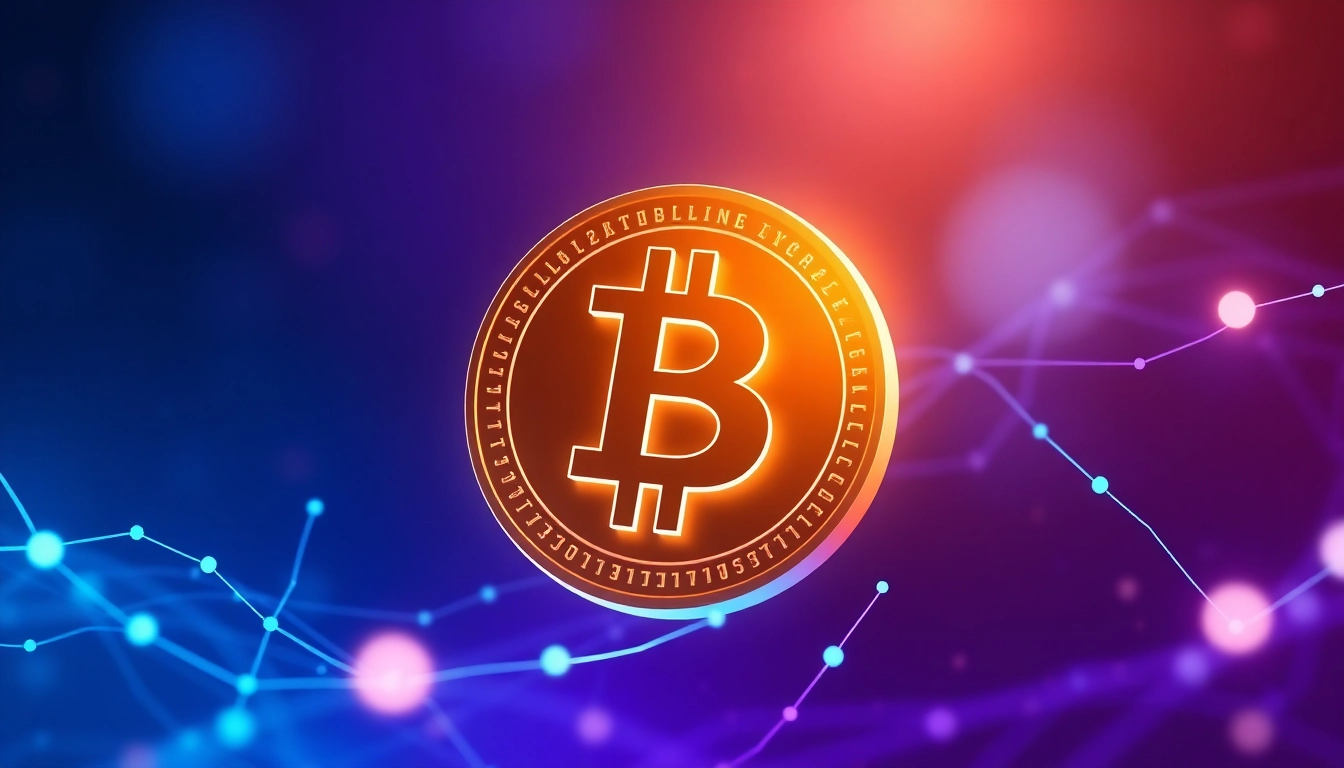Understanding Bitcoin Mining Basics
What is Bitcoin Mining?
Bitcoin mining is the process by which new bitcoins are created and transactions are verified and added to the public ledger, known as the blockchain. Essentially, it involves using computer hardware to solve complex mathematical problems, which in turn facilitates the secure processing of Bitcoin transactions. When miners successfully solve a problem, they create a new block for the blockchain and are rewarded with newly minted bitcoins and transaction fees. This decentralized method ensures that no single entity has control over the entire network, maintaining the integrity and security of transactions within the Bitcoin ecosystem. For those new to the concept, it is essential to grasp the fundamental principles before diving into the practicalities of Bitcoin mining and its potential profitability.
How Bitcoin Mining Works
The underlying technology of Bitcoin mining relies on a consensus mechanism known as Proof of Work (PoW). In essence, miners compete to solve a cryptographic puzzle, which is fundamentally a numerical problem that requires significant computational power to solve. The first miner to solve this problem effectively adds the new block to the blockchain. Here’s how the whole process works:
- Transaction Data: Bitcoin transactions are collected into a block.
- Hashing Function: Miners use a hashing function (SHA-256 for Bitcoin) to create a unique digital fingerprint of the block.
- Difficulty Target: Each block must meet a certain difficulty target, which adjusts approximately every 2,016 blocks to ensure that new blocks are created roughly every ten minutes.
- Mining Equipment: Miners employ specialized hardware, such as ASICs (Application-Specific Integrated Circuits), which are designed specifically for mining bitcoins at high efficiency.
- Verification and Consensus: Once a block is mined, it is broadcast to the network, where it is verified by other nodes before being added to the blockchain.
This collaborative effort ensures the integrity of the blockchain while enabling the decentralized element of Bitcoin’s structure. The competitive nature of the mining process contributes to enhanced security of the network as well.
Essential Tools for Beginners
For those looking to venture into Bitcoin mining, having the right tools and equipment is crucial for success. Here are some essential resources you should consider:
- Mining Hardware: As mentioned previously, ASIC miners are the most effective and efficient hardware, drastically outperforming traditional GPUs in mining capabilities.
- Mining Software: You’ll need software to connect your hardware to the blockchain network. Examples include CGMiner, BFGMiner, and EasyMiner.
- Bitcoin Wallet: A secure wallet is necessary for storing your earnings. Options include hardware wallets (like Ledger or Trezor) and software wallets that offer different levels of security and ease of access.
- Electricity Supply: Given the high energy consumption of mining operations, ensure that you have a reliable electricity source, preferably at lower rates to maintain profitability.
Choosing the Right Bitcoin Mining Method
Hardware vs. Software Mining
When it comes to Bitcoin mining, you can choose between hardware-based mining using ASIC devices or engaging in software mining, which is typically facilitated via cloud mining. Each has its advantages and limitations:
- Hardware Mining: This method involves setting up your own mining rig. You gain complete ownership and control over your mining operations, from the hardware you choose to the software configurations. However, it requires a substantial upfront investment, as quality mining equipment can be expensive.
- Software Mining (Cloud Mining): This method allows you to rent mining power from a third party. It’s especially appealing for beginners, as it eliminates the need for hardware investment and setup hassles. However, it may yield lower profits due to sharing with the cloud mining service provider.
The decision ultimately depends on your personal preferences, risk tolerance, and available resources.
Cloud Mining: Pros and Cons
Cloud mining can be a viable option for those not willing to invest heavily in hardware or manage a mining operation. Here’s a detailed breakdown of the pros and cons:
Pros:
- No Hardware Costs: You can start mining without purchasing expensive equipment.
- Ease of Use: Minimal technical knowledge is needed, allowing beginners to enter the market more easily.
- Maintenance-Free: You don’t have to worry about the physical setup or maintenance of the hardware.
Cons:
- Less Control: By using cloud services, you relinquish control over your mining operations to the provider.
- Fees and Profits: Profits are often lower due to the fees charged by cloud mining services, which can reduce earnings significantly.
- Scams and Reliability: The risk of falling victim to scams with cloud mining services is high, as not all companies are legitimate.
Weighing these factors carefully can help you make an informed decision on whether to pursue cloud mining or hardware-based mining.
Mining Pools: Join or Solo?
Mining pools are groups of miners who work together to increase their chances of solving a block and earning rewards. By pooling resources, participants can achieve a more consistent payout compared to solo mining. Here are the key considerations:
Joining a mining pool generally offers advantages such as:
- Steady Earnings: Higher chances of earning a steady income compared to the unpredictable nature of solo mining.
- Reduced Variance: Earnings from mining pools are generally less volatile since rewards are shared among members, providing more predictable income.
- Community Support: Being part of a mining pool offers camaraderie and support from fellow miners, facilitating experiences and knowledge sharing.
However, the trade-offs include:
- Fees: Mining pools usually charge a fee that can eat into your profits.
- Lower Individual Rewards: Since rewards are shared amongst the pool members, your cut will be smaller than if you were mining alone and hit a block.
It’s important to carefully evaluate how a mining pool aligns with your goals and mining strategy.
Optimizing Your Bitcoin Mining Setup
Energy Efficiency Tips
Given that mining is energy-intensive, optimizing for energy efficiency is crucial for profitability. Here are several strategies you can implement:
- Choose Energy-Efficient Hardware: Select mining equipment known for low energy consumption relative to their hashing power. ASIC miners designed for efficiency can pay for themselves quicker.
- Cool Your Mining Operations: Excessive heat can reduce the lifespan of your equipment as well as its efficiency. Implement proper cooling solutions, such as fans or air conditioning, to create a more conducive mining environment.
- Leverage Renewable Energy Sources: Depending on your location, consider using renewable energy sources like solar or wind to decrease energy costs significantly.
By focusing on efficient practices, you can lower operational costs and improve overall profitability.
Setting Up Your Mining Rig
Building a successful mining rig involves several steps:
- Select Your Hardware: Research and purchase the best ASIC miners within your budget.
- Assembly: Connect your mining hardware to power sources and ensure each unit is configured correctly.
- Install Mining Software: Download and install compatible mining software that connects your machine to the blockchain network.
- Join a Mining Pool: If you choose to mine in a pool, select one that aligns with your goals and configure your software accordingly.
Following these setup steps carefully will help you optimize performance from the start.
Monitoring Performance Metrics
After your mining rig is running, it’s essential to monitor its performance consistently. Keep track of crucial metrics such as:
- Hash Rate: This indicates how many hashes your mining rig can compute per second. A higher hash rate typically corresponds with higher chances of solving a block.
- Power Consumption: Understanding how much power your rigs consume can help you calculate profitability and operational efficiency.
- Temperature: Keep an eye on the operating temperatures of your equipment to prevent overheating and hardware failures.
- Profitability: Use tools to calculate your mining profitability based on current Bitcoin prices, electricity costs, and hardware performance.
Using this data effectively will allow you to make informed adjustments to maximize output and profitability.
Staying Safe in the Bitcoin Mining World
Common Scams in Bitcoin Mining
The lucrative nature of Bitcoin mining has attracted numerous scams targeting unsuspecting miners. Awareness of common scams is essential:
- Ponzi Schemes: Some mining operations promise unrealistic returns, often using money from new investors to pay older ones, eventually collapsing.
- Fake Cloud Mining Services: Many fraudulent websites offer cloud mining services that do not exist; they take your investment without providing any return.
- Phishing Attacks: Be cautious of fake emails or websites that mimic legitimate mining platforms, aiming to steal your personal and financial information.
Staying informed and vigilant can help you avoid falling victim to such scams.
Best Security Practices
Protecting your mining setup requires adopting several best security practices:
- Use Strong Passwords: Ensure all accounts related to your mining activity utilize unique and complex passwords.
- Enable Two-Factor Authentication (2FA): Add an extra layer of security by utilizing 2FA on wallets and cloud mining accounts.
- Regular Software Updates: Keep mining hardware and software up-to-date to protect against vulnerabilities that can be exploited.
Implementing these strategies can minimize security risks associated with mining.
Identifying Legitimate Mining Opportunities
To identify legitimate mining opportunities, consider the following steps:
- Conduct Thorough Research: Before investing in any mining hardware or service, research their reputation online, look for reviews, and seek community feedback.
- Verify Regulatory Compliance: Ensure that the mining operation complies with local laws and regulations, which helps to ensure its legitimacy.
- Assess Profitability: Evaluate projected profitability based on electricity costs, mining difficulty, and Bitcoin price trends to make smarter investment decisions.
Cautious exploratory measures can lead you to viable and trustworthy mining avenues.
The Future of Bitcoin Mining
Trends to Watch in Bitcoin Mining
As the cryptocurrency landscape evolves, several trends in bitcoin mining are worth noting:
- Increased Regulation: Governments worldwide are beginning to impose regulations on cryptocurrency mining to manage energy consumption and environmental impacts.
- Green Mining Initiatives: With environmental concerns on the rise, there’s a growing focus on sustainable mining practices, including the use of renewable energy sources.
- Technological Advancements: As technology evolves, more efficient mining hardware and software are projected to emerge, enhancing overall mining efficiency.
Keeping an eye on these trends will help miners adapt and thrive amidst ongoing changes.
Regulatory Impact on Bitcoin Mining
As the cryptocurrency industry matures, government regulations aimed at controlling mining practices are becoming prevalent. These regulations can severely impact aspects like:
- Location Restrictions: Some regions may restrict mining altogether or impose heavy taxes and fees to discourage energy-intensive operations.
- Energy Usage Limits: Regulations might place limits on energy consumption, prompting miners to seek more efficient or renewable energy sources.
Staying informed about regulatory changes will be essential for miners to navigate their operations effectively.
Long-term Profitability Analysis
Understanding the long-term profitability of Bitcoin mining requires analysis of several interrelated factors, including:
- Bitcoin Halving Events: Bitcoin supply undergoes halving approximately every four years, impacting the rewards miners receive. This can increase scarcity, impacting Bitcoin’s price.
- Market Trends: Fluctuations in Bitcoin prices, mining difficulty, and overall demand can significantly affect profitability over time.
- Operational Costs: Energy prices and hardware maintenance will also play a critical role in determining the financial viability of mining operations. Miners must remain vigilant about these costs to maintain profits.
Continual assessment and adaptation in response to these factors will be key for miners aiming to sustain long-term profitability.


